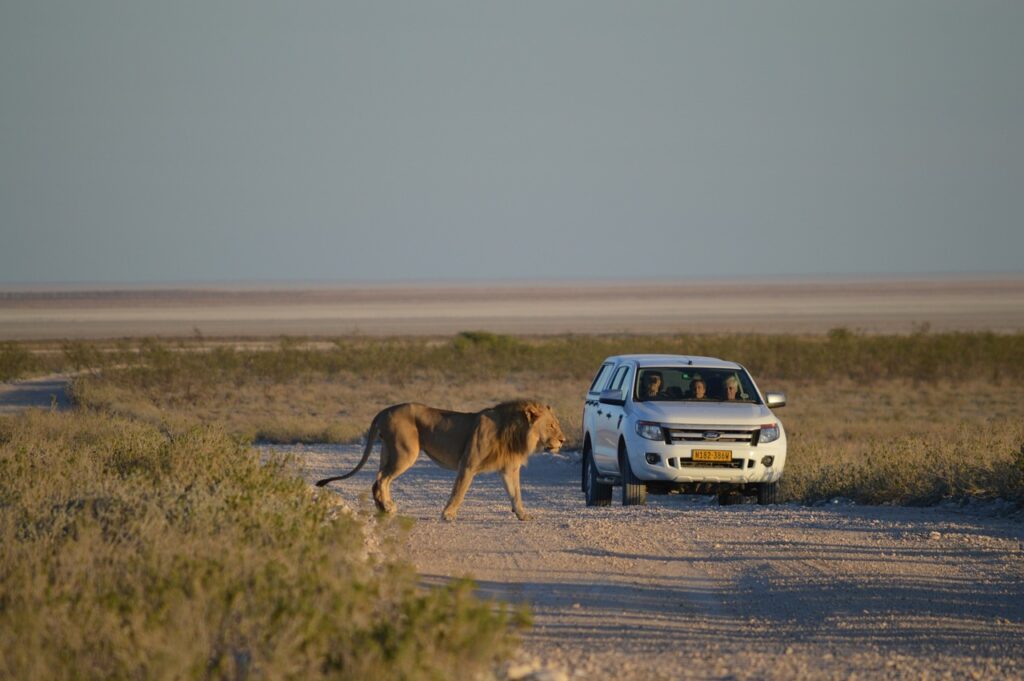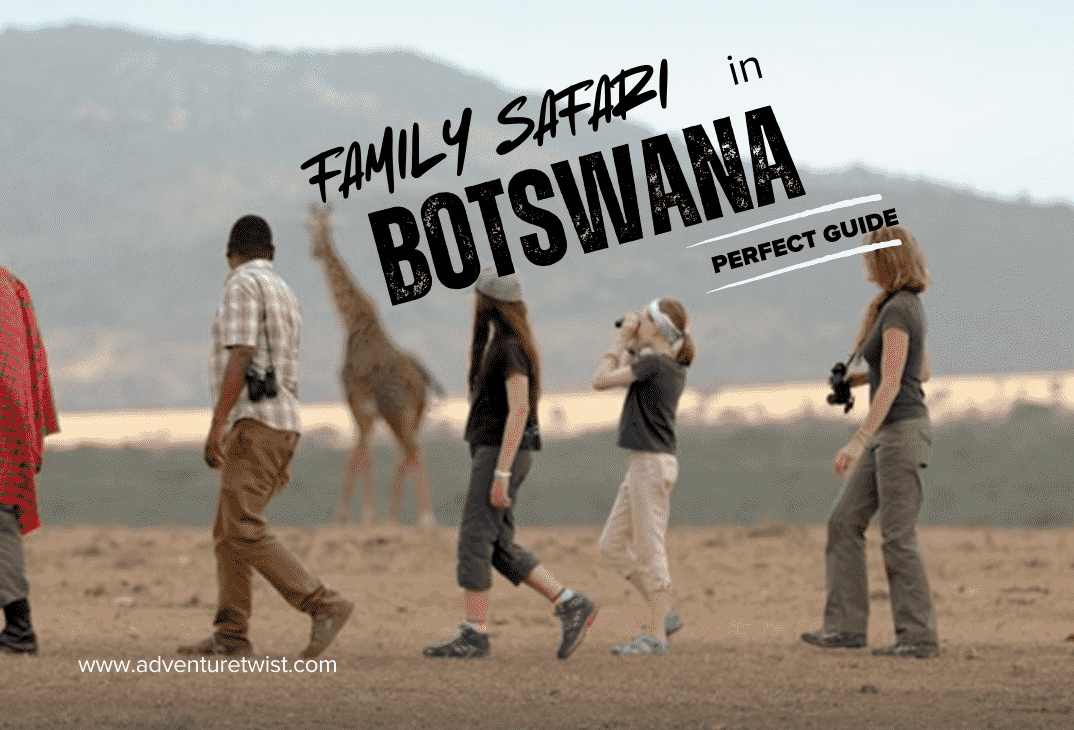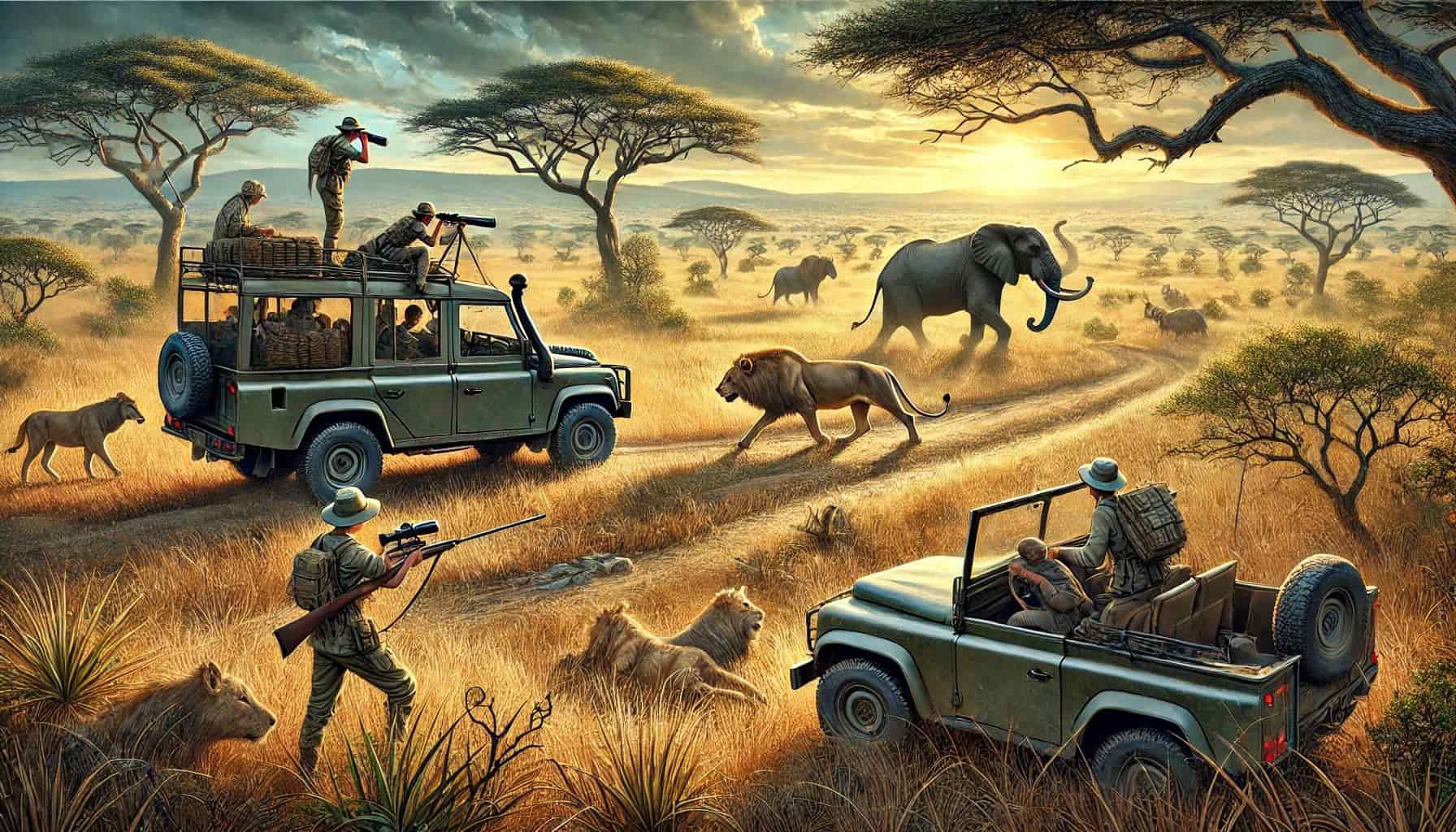
No doubt, Africa is blessed with incredible safari experiences, and Namibia is no exception. If you are preparing to visit one of Africa’s safaris and have Namibia on your list of destinations, you have made an excellent choice. In this blog post, we have compiled information from both experience and research to answer your question: “Is Namibia good for a safari?”
The enchanting reality of the Namibian safari stretches to the famous dunes of Sossusvlei and everything in between, there is so much natural beauty to see and do in Namibia.
Sharing borders with Southern Africa’s safari heavyweights like South Africa, Botswana and Zambia, Namibia safari experience has little in common with its neighbors. Apart from offering a rich blend of adventure and tranquility, Namibia boasts the Etosha National Park. Here is home to a vast array of wildlife, including elephants, lions, rhinos, and giraffes, making it a prime location for game viewing.
Going on safari in Namibia is more about marveling at the staggering desert scenery and the unique micro-scale wildlife that can withstand this extreme environment. If there’s one place that’s truly about the journey, not the destination, it is Namibia.
Why Namibia is a Great Safari Destination
The foremost answer to this question is the Etosha National Park. Namibia is good for safaris because of this 22 750 km² diverse landscape regarded as Africa’s greatest wildlife reserves.
The Etosha National Park is an area of open, grassy woodland and thick scrub, studded with waterholes. It is possible to find many traditional safari species here, including four of the big five.
In fact, Etosha boasts one of the healthiest populations of black rhino. Elephant and lion are fairly common sights. Leopards are present but more elusive. Other sightings might include hyena, jackal, honey badger, zebra, wildebeest, springbok, gemsbok, and more.
The pan also attracts thousands of birds, representing hundreds of species, about a third of which are migratory. Species represented include flamingos, lilac-breasted rollers, and birds of prey.
Etosha is also one of the best places in Southern Africa to see the endangered cheetah and black rhino not to mention rare antelope species like black-faced impala, Damara dik dik and roan antelope, plus there’s a bird count of 340 species – an interesting blend of savannah, water and desert birds.
Why Namibia is good for safaris is also due to its sense of solitude and virgin wilderness. Unlike more crowded destinations, Namibia offers an off-the-beaten-path experience, allowing visitors to immerse themselves in nature and wildlife without the hustle and bustle of tourist groups.
RECOMMENDED: How Many Days Do You Need for an African Safari
What is the Wildlife Viewing in Namibia Like?

Namibia is home to a remarkable array of wildlife, offering an unforgettable safari experience. From the desert-adapted creatures of the Namib Desert to the abundant game of Etosha National Park, wildlife in Namibia safaris showcases the country’s unique animal diversity. This safari destination is one of the few places where you can see the critically endangered black rhino.
Animals you can see on a Namibia safari depends on the particular destination visited. Apart from the Etosha which has been extensively discussed in the previous section, there is the Fish River Canyon where leopard, brown hyena, and bat-eared fox are common sights. Also, 240 species of birds have been recorded in the area with species ranging from ostriches to eagles to lovebirds and everything in between. Meanwhile, there are more:
- In Kaokoland, wildlife is more scattered as the desert landscape cannot support huge numbers of animals. However, possible sightings include desert-adapted elephants, Hartmann’s mountain zebra, black rhino, and giraffe. Nile crocodiles and hippos can be found in the Keune River.
- The Skeleton Coast National Park is reputed for its huge colonies of cape-fur seals, which can be spotted along the coast. You can also see brown hyenas, desert-adapted elephants, black rhinos, desert lions, jackals, ostriches, giraffes, and cheetahs in the park.
- The sand dunes of Sossusvlei are where you will find wildlife which have specially adapted to life in the unforgiving desert. It is possible to spot the striking gemsbok (Namibia’s national animal) as well as springbok and even wild horses. You may also see ostrich, spotted hyena, brown hyena, and black-backed jackal. Several nocturnal animals including aardvark might be sighted in Sossusvlei.
Is Namibia Safaris Affordable?
Namibia stands out as a more affordable option compared to other popular African destinations like Botswana or Kenya, when considering a safari adventure. Namibia safari prices are flexible, offering a range of options for both luxury and budget-conscious travelers.
RECOMMENDED: Ultimate Guide on How to Save Money for an African Safari Trip
Namibia is known for its affordability, especially for budget travelers. The cost of safaris in Namibia can start as low as $150-$200 per person per day, while mid-range lodge safaris can cost around $300-$500 per person per day, for group tours, self-drive safaris, or camping safaris, where travelers can explore national parks without breaking the bank. For those seeking an opulent experience, Namibia boasts numerous luxury lodges, private tours, and fly-in safaris that can range from $500 to $1,500 per night. These high-end packages often include premium accommodations, guided game drives, and gourmet dining, all while enjoying exclusive wildlife encounters in remote locations.
However, Namibia is good for safaris, especially for those looking to embark on self-drive adventures. The country’s well-maintained roads and accessible campsites make self-drive safaris particularly popular, allowing visitors to experience the incredible landscapes and wildlife at their own pace.
The Unique Desert Safari Experience in Namibia
A Namibia desert safari offers a truly one-of-a-kind experience, distinct from traditional African safaris. The vast, arid landscapes of the Namib Desert, considered the world’s oldest desert, create a surreal backdrop for adventure, where towering red dunes and endless horizons leave visitors in awe.
The Sossusvlei safari experience is the highlight of any desert safari in Namibia. Located within the Namib-Naukluft National Park, Sossusvlei is renowned for its striking red sand dunes, including the iconic Dune 45 and the towering Big Daddy. These towering dunes provide a breathtaking view at sunrise or sunset, making for unforgettable photo opportunities.
While the landscape itself is a key draw, the desert is also home to fascinating wildlife uniquely adapted to its harsh conditions. Desert-dwelling species like oryx, springbok, and the rare desert elephant can be spotted navigating this unforgiving environment, showcasing nature’s resilience.
Self-Drive in Namibia Safari: Freedom to Explore
Namibia is one of the few African countries where self-drive safaris are not only popular but also considered safe and rewarding. A self-drive safari in Namibia offers travelers the freedom to explore its stunning landscapes and wildlife-rich national parks at their own pace, making it an ideal choice for adventurers.
What sets Namibia apart as a great safari destination is its well-developed road infrastructure and clear signage, allowing for seamless navigation through key safari spots. From the vast plains of Etosha National Park to the dramatic dunes of the Namib Desert, visitors can easily access top wildlife locations on their own. The country’s low population density and well-maintained roads contribute to a safe, stress-free travel experience, making Namibia good for safaris. This combination of accessibility, safety, and diverse landscapes ensures a unique and rewarding adventure for any traveler.
A Namibia self-guided safari gives travelers the flexibility to plan their itinerary, linger longer at favorite locations, and make spontaneous stops for wildlife sightings. Etosha National Park is a particularly popular destination for self-drive safaris, as it offers an extensive network of roads leading to various waterholes where elephants, lions, and rhinos gather.
For those looking to camp, Namibia provides numerous campsites within its national parks, allowing for an immersive and budget-friendly safari experience. For added comfort, a range of affordable lodges are available as well. A self-drive safari in Namibia offers a unique, independent way to experience the country’s exceptional wildlife and scenery.
RECOMMENDED: What are The Best Ways to Book a Safari?
Best Time to Visit Namibia Safari
The best time for a Namibia safari is during the dry season, which runs from May to October, especially the months of July and August. This period is widely regarded as the ideal Namibia safari season, especially for wildlife viewing in Etosha National Park. The dry season brings cooler temperatures and minimal rainfall, causing animals to gather around the park’s waterholes, making it easier for visitors to witness a wide range of wildlife.
As water becomes scarce, elephants, zebras, lions, and rhinos are frequently spotted in large numbers near these waterholes, creating excellent game-viewing opportunities. The open landscapes and clear visibility during the dry months also enhance the safari experience, as vegetation is thinner and animals are more active throughout the day.
In contrast, the wet season (November to April) transforms Namibia’s scenery, turning the arid plains into lush, green landscapes. While this is a beautiful time for photography, wildlife can be harder to spot as animals no longer need to gather around waterholes. However, the wet season is ideal for birdwatchers, as migratory species flock to the area, and newborn animals can also be seen during this time.
For those prioritizing wildlife encounters, particularly big game, the dry season offers the most rewarding experience. However, both seasons have their unique appeal, allowing travelers to choose based on their preferences.
RECOMMENDED: The Best month to go on an African Safari
Namibia Conservation and Eco-Tourism Efforts
Namibia is not only known for its stunning landscapes and unique wildlife but also for being a global leader in conservation and eco-tourism. When Namibia achieved independence in 1990, it was the first country in Africa and one of only a few in the world that incorporated environmental protection into its constitution.
In Namibia conservation safaris, sustainable tourism goes hand in glove with wildlife protection and community empowerment. Through initiatives such as ecotourism and conservation travel, the preservation of lions, cheetahs, black rhinos, zebras and other native wildlife have increased sustainable income for their communities.
Over 40% of Namibia’s land is dedicated to conservation, much of it managed by local communities. These conservancies allow residents to benefit directly from tourism, creating a strong incentive to protect wildlife and their habitats. By choosing eco-friendly safaris in Namibia, visitors actively contribute to these conservation efforts.
Namibia is particularly famous for its successful efforts to protect endangered species like the black rhino and desert elephants. Safari-goers have the unique opportunity to observe these rare animals in their natural environments. Lodges and safari operators in Namibia often focus on minimizing their ecological footprint, using solar power, reducing waste, and practicing sustainable land use, further enhancing the eco-friendly safari experience.
In addition to wildlife conservation, Namibia’s eco-tourism initiatives promote the preservation of its fragile ecosystems, such as the Namib Desert and Skeleton Coast. These efforts ensure that future generations will continue to enjoy the country’s rich biodiversity.
The tourist will find a variety of eco-friendly safaris typically constructed using local materials and by employing only locals. Whether using solar power, offering eco-friendly waste disposal, or sourcing local materials, Namibia’s safari accommodations are often built with the environment in mind, allowing guests to enjoy their stay with minimal impact on the surroundings.
Conclusion: Namibia is good for safari get-away
Namibia boasts some of the most visually arresting and varied terrains in Africa, ranging from the towering red dunes of the Namib Desert to the rugged mountains of Damaraland, to the lush Caprivi Strip in the north. This safari destination offers a unique blend of dramatic landscapes, rare wildlife, exceptional conservation efforts, and immersive cultural experiences.
Overall, Namibia is good for safaris not just for its wildlife and landscapes but for the chance to support meaningful conservation work while offering the visitor exclusivity. You’ve got to experience Namibia wildlife safari, even if as a contribution to the protection of the environment. It has remained one of Africa’s most unspoiled safari destinations.



0 Comments